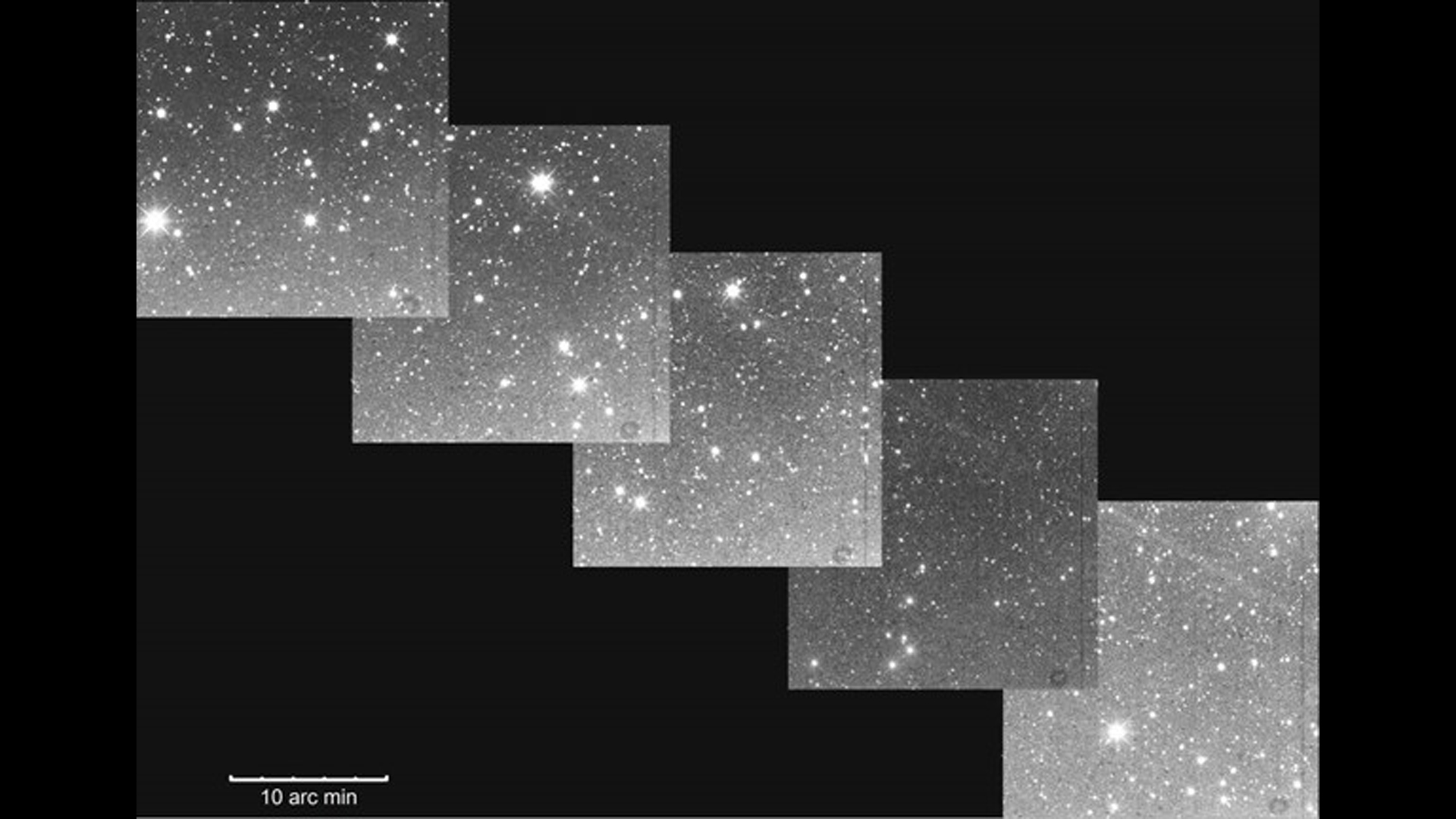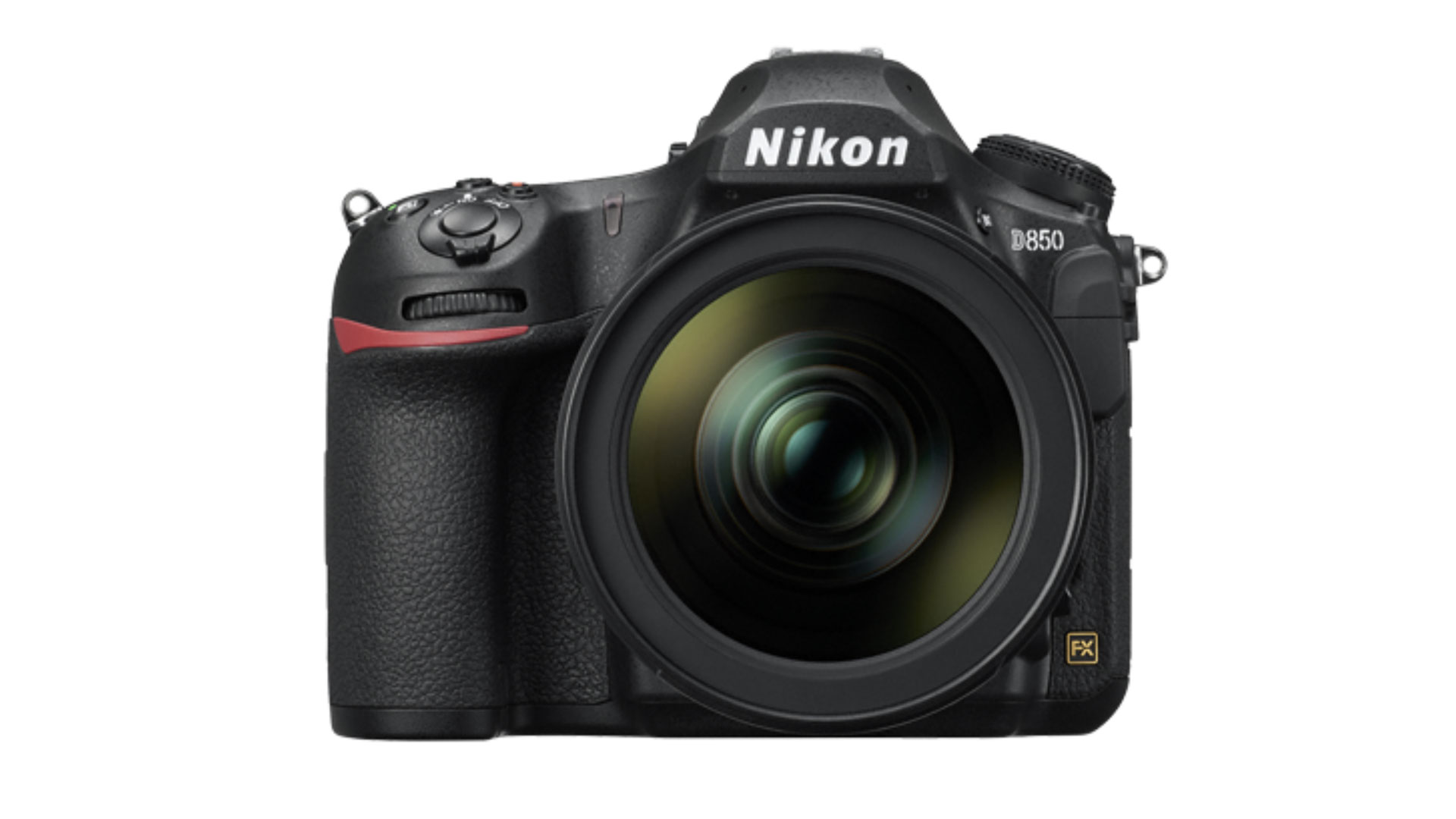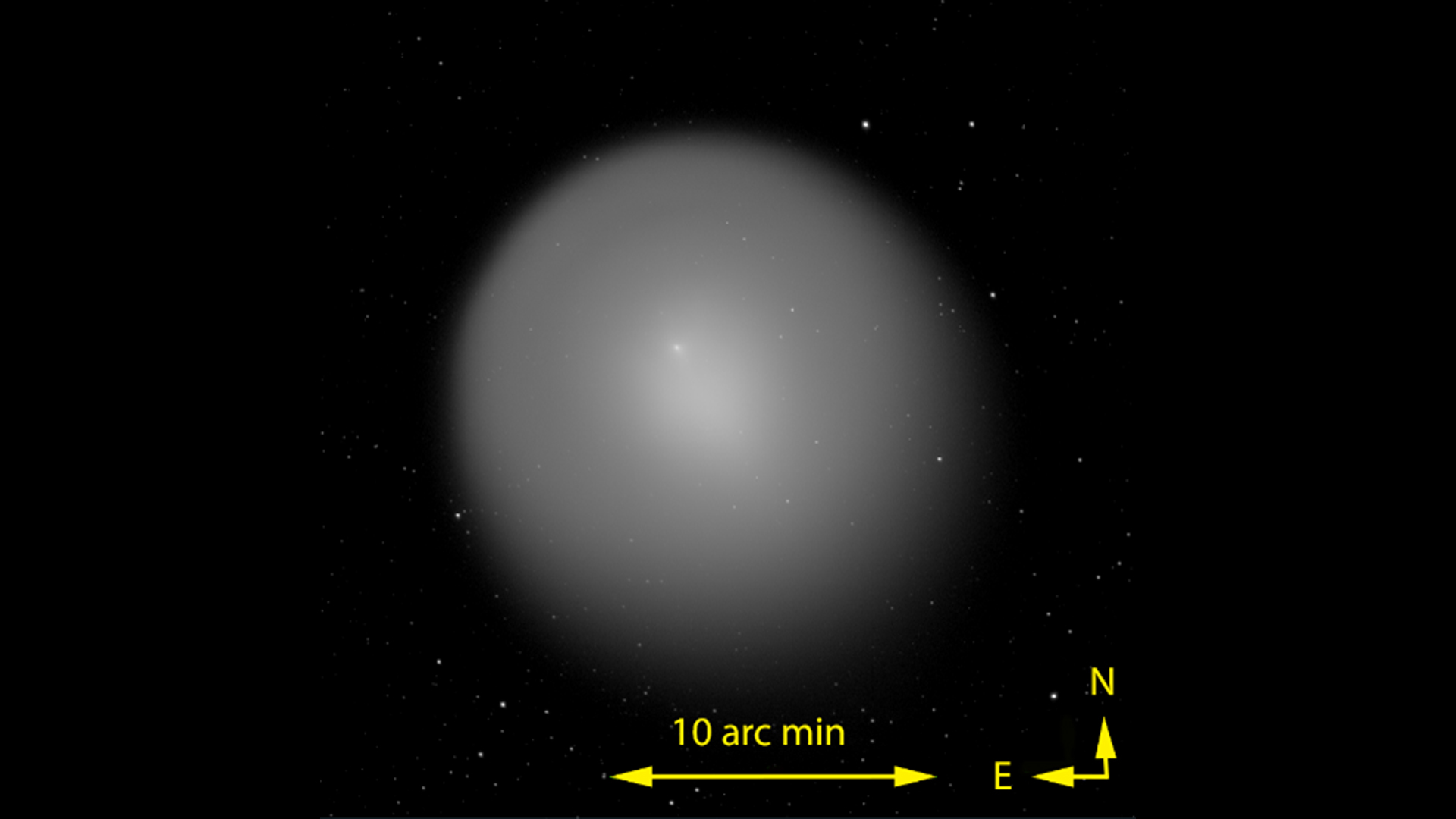Debris from the most spectacular comet outburst ever could thrill skywatchers in August
From late July through August, amateur astronomers with medium-size telescopes should be able to spot the trails.

Dust particles produced by the largest comet outburst ever detected will be visible even to amateur ground-based telescopes this summer, a study found.
In October 2007, an underwhelming comet known as 17P/Holmes suddenly brightened by a factor of 1 million. It became so bright that for a period of time it was observable even by the naked eye, the most significant such brightening ever recorded. The comet's coma, its glowing tail, spread so large in the wake of the outburst that for a few weeks, the comet became the largest apparent object in the entire solar system.
At that time, the comet was twice as far from Earth as the sun is, and it soon disappeared again toward the outer fringes of the solar system. In a new study, a team of Finnish researchers calculated that the trail of dust and meteorites produced by the comet during that spectacular outburst will be visible from Earth this summer even with quite basic ground-based telescopes.
Related: Comets vs asteroids: How do these rocky objects compare?

Looking for a telescope for the next comet or stargazing event? We recommend the Celestron Astro Fi 102 as the top pick in our best beginner's telescope guide.
"A vast number of particles that were ejected from the comet's coma during the outburst spread into elliptic orbits around the sun, offering a unique opportunity to study the cometary material and its dispersion in interplanetary space," Maria Gritsevich, senior researcher at the Finnish Geospatial Research Institute and lead author of the new study said in an statement. "To fully understand the physics and the extent of the outburst phenomenon, we have developed a new model to realistically describe the evolution of cometary dust trails."
To calculate the trajectory of the trails, the team used data from Earth's previous passage through the debris field in 2015. The scientists were able not only to forecast the path of the debris cloud but also to trace its origins back to the 2007 explosion that generated it.
The streams are visible twice a year, when Earth crosses the orbital plane of 17P/Holmes, the researchers said in the statement.
Breaking space news, the latest updates on rocket launches, skywatching events and more!
According to the model, amateur astronomers with telescopes of at least 11-inch (30 centimeters) aperture fitted with CCD cameras should be able spot the trails from late July through August.

If you're looking for a good camera for comets, meteor showers and astrophotography, our top pick is the Nikon D850. Check out our best cameras for astrophotography for more and prepare for the tau Herculids with our guide on how to photograph a meteor shower.
"In this study we have modeled also the exact outburst event of the comet 17P/Holmes and the propagation of produced dust particles of the dust trail with high precision," Markku Nissinen, member of the Finnish Fireball Network at the Ursa Astronomical Association and a co-author of the paper, said in the statement. "This is the first time that these two models are combined and in this kind of high-precision way they resulted in the novel powerful model."
The model shows that the cloud of debris dispersed following the outburst into an "hourglass" shape. The orbits of the streams of dust and meteorites intersect at the site of the original outburst site after completing a full orbit, the scientists said. It is at this meeting point that the debris cloud becomes so bright to be visible from Earth.
The cause of the magnificent outburst in 2007 is still a mystery, but astronomers believe that 17P/Holmes has made similar displays before. In fact, the comet was only discovered in 1892 because of a similar sudden brightening, according to a 2013 paper published in the Astrophysical Journal.
The study was published in the journal Monthly Notices of the Royal Astronomical Society in March.
Follow Tereza Pultarova on Twitter @TerezaPultarova. Follow us on Twitter @Spacedotcom and on Facebook.

Tereza is a London-based science and technology journalist, aspiring fiction writer and amateur gymnast. She worked as a reporter at the Engineering and Technology magazine, freelanced for a range of publications including Live Science, Space.com, Professional Engineering, Via Satellite and Space News and served as a maternity cover science editor at the European Space Agency.

